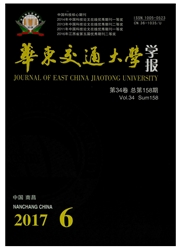

 中文摘要:
中文摘要:
引入废旧电子产品的可再利用率,分别建立了由制造商负责回收,零售商负责回收,第三方负责回收的双渠道闭环供应链模型。运用博弈论对模型进行分析,研究了废旧电子产品的可再利用率对双渠道闭环供应链的渠道价格的影响,分别得出了在各种回收模式下最优的产品批发价格,网络销售价格,零售商零售价格,废旧电子产品的回收价格,补偿回收价格以及供应链各节点企业的利润。研究发现:废旧电子产品的可再利用率对制造商的利润是一个关键因素,无论何种回收模式下,制造商的利润随着废旧品再利用率的增大而增大,而对于零售商和第三方来说只有在它们参与回收时才会对利润产生正相关的影响,废旧电子产品的可再利用率对产品的零售与批发价格无影响,但是对废旧电子产品的回收价格、回收补偿价格和回收量有很大关系,它们随其提高而增大。
 英文摘要:
英文摘要:
In light of recyclability rate of waste electronic products, this paper established a model of double-channel closed-loop supply chain, in which the manufacturer, the retailer and the third party are responsible for recycling. By use of the game theory to analyze the model, it explored the effect of recyclability rate on the price of the double-channel closed-loop supply chain, obtaining the optimal wholesale price, online sales price, retail-ers’ retailing price, recycling price of waste electronic products, the optimal compensation price in various recy-cling modes and each node’s enterprise profits of the supply chain. Analysis results found that: recyclability rate of waste electronic products is a key factor for the manufacturer's profit; whatever the recycling mode is, the manufacturer's profits increase with the increased recyclability rate; for the retailers and the third party, only when they are involved in recycling, they have direct impact on profits; recyclability rate of waste electronic products has no effects on the retail and wholesale price of products, but are closely related to the recycling price, recovery compensation price and the total recovery of waste electronic products, which may increase along with the increased recyclability rate.
 同期刊论文项目
同期刊论文项目
 同项目期刊论文
同项目期刊论文
 期刊信息
期刊信息
